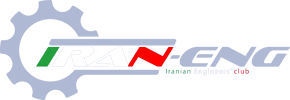طریقه نوشتن مقاله بین المللی4
طریقه نوشتن مقاله بین المللی4
REFERENCES
[1] D. J. Beebe, “Signal conversion (Book style with paper title and editor),” in Biomedical Digital Signal Processing, W. J. Tompkins, Ed. Englewood Cliffs, NJ: Prentice-Hall, 1993, ch. 3, pp. 61–74.
[2] M. Akay, Time Frequency and Wavelets in Biomedical Signal Processing (Book style). Piscataway, NJ: IEEE Press, 1998, pp. 123–135.
[3] G. B. Gentili, V. Tesi, M. Linari, and M. Marsili, “A versatile microwave plethysmograph for the monitoring of physiological parameters (Periodical style),” IEEE Trans. Biomed. Eng., vol. 49, no. 10, pp. 1204–1210, Oct. 2002.
[4] V. Medina, R. Valdes, J. Azpiroz, and E. Sacristan, “Title of paper if known,” unpublished.
[5] E. H. Miller, “A note on reflector arrays (Periodical style—Accepted for publication),” IEEE Trans. Antennas Propagat., in press.
[6] T. Menendez, S. Achenbach, W. Moshage, M. Flug, E. Beinder, A. Kollert, A. Bittel, and K. Bachmann, “Prenatal recording of fetal heart action with magnetocardiography” (in German), Zeitschrift für Kardiologie, vol. 87, no. 2, pp. 111–8, 1998.
[7] J. E. Monzon, “The cultural approach to telemedicine in Latin American homes (Published Conference Proceedings style),” in Proc. 3rd Conf. Information Technology Applications in Biomedicine, ITAB´00, Arlington, VA, pp. 50–53.
[8] F. A. Saunders, “Electrotactile sensory aids for the handicapped (Presented Conference Paper style),” presented at the 4th Annu. Meeting Biomedical Engineering Society, Los Angeles, CA, 1973.
[9] J. R. Boheki, “Adaptive AR model spectral parameters for monitoring neonatal EEG (Thesis or Dissertation style),” Ph.D. dissertation, Biomed. Eng. Program, Univ. Fed. Rio de Janeiro, Rio de Janeiro, Brazil, 2000.
[10] J. P. Wilkinson, “Nonlinear resonant circuit devices (Patent style),” U.S. Patent 3 624 12, July 16, 1990.

